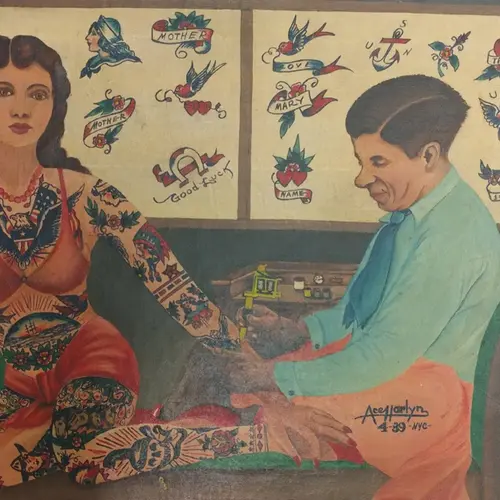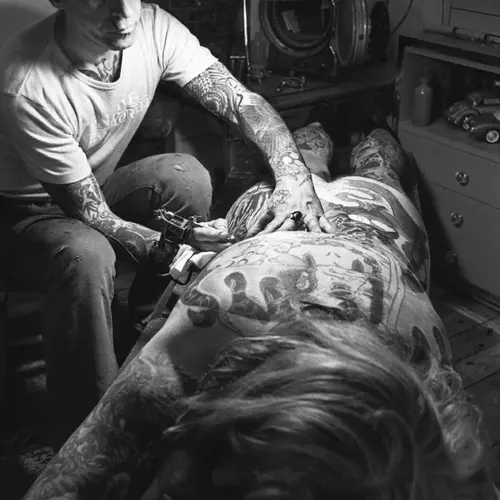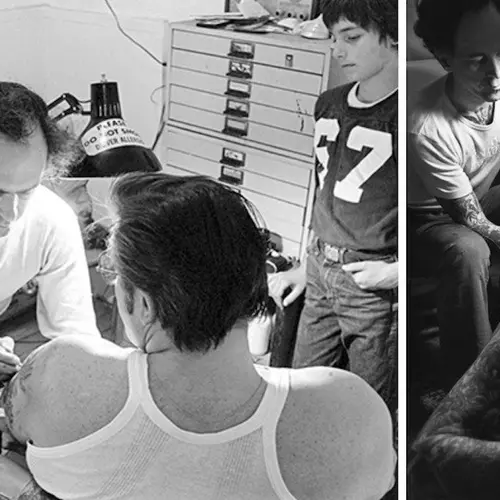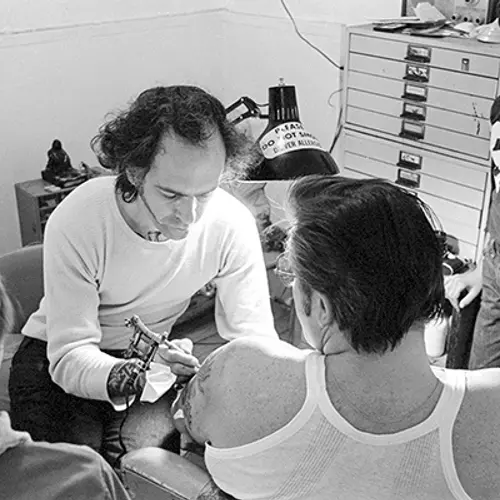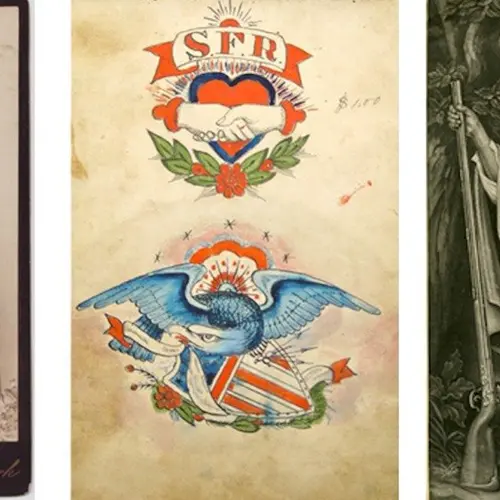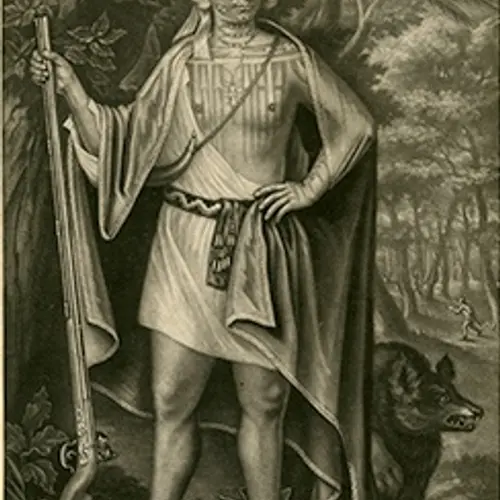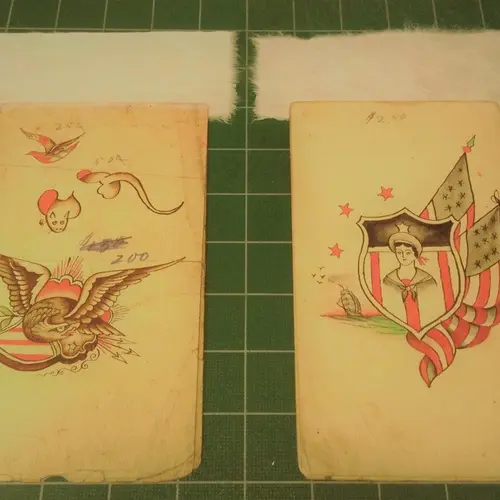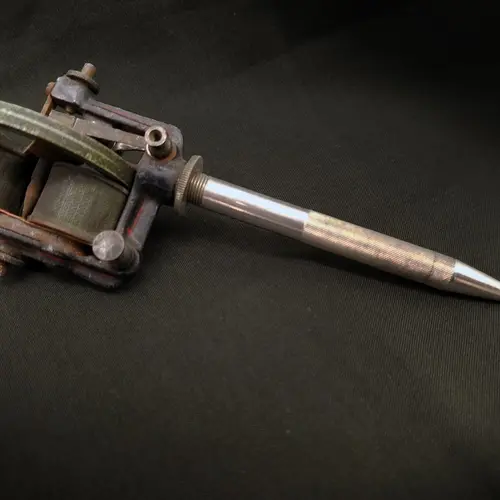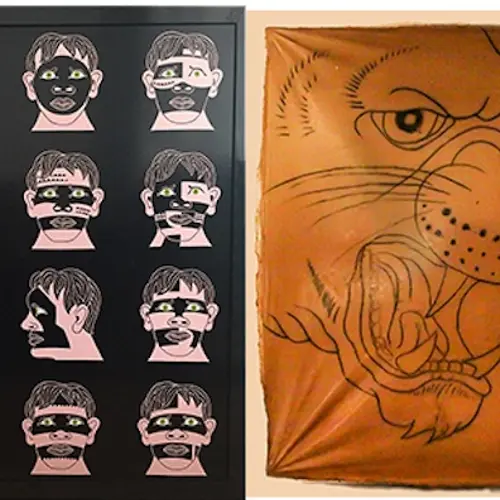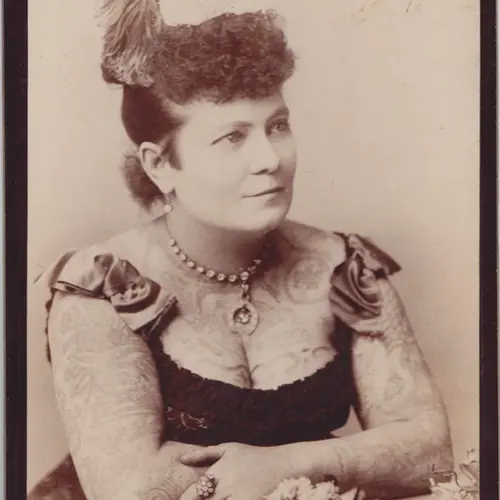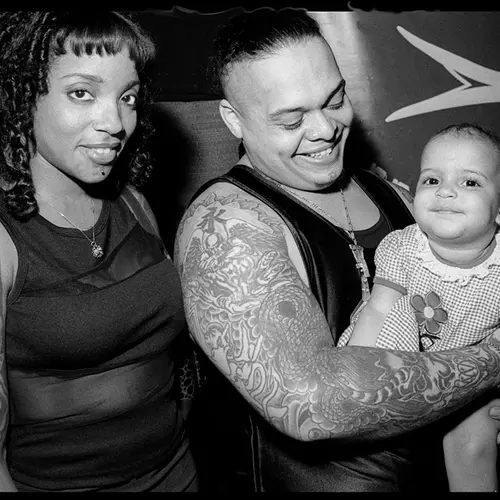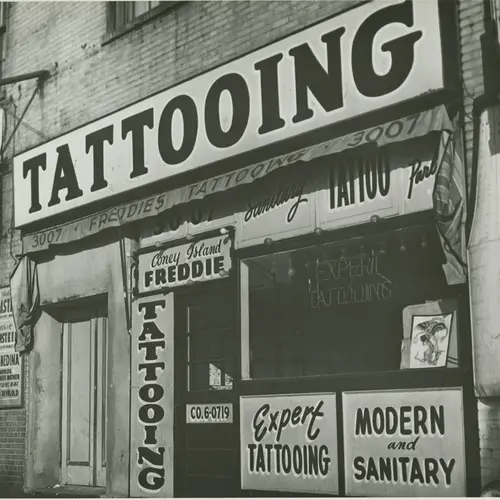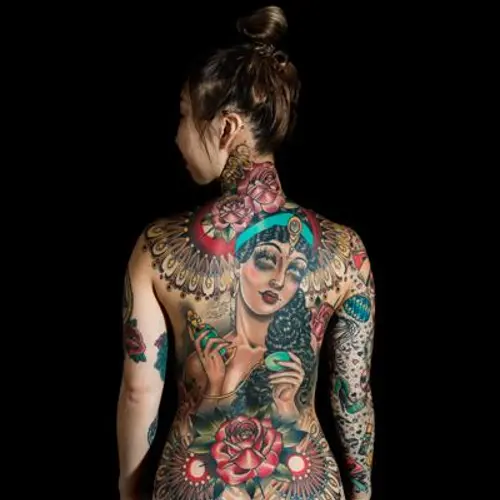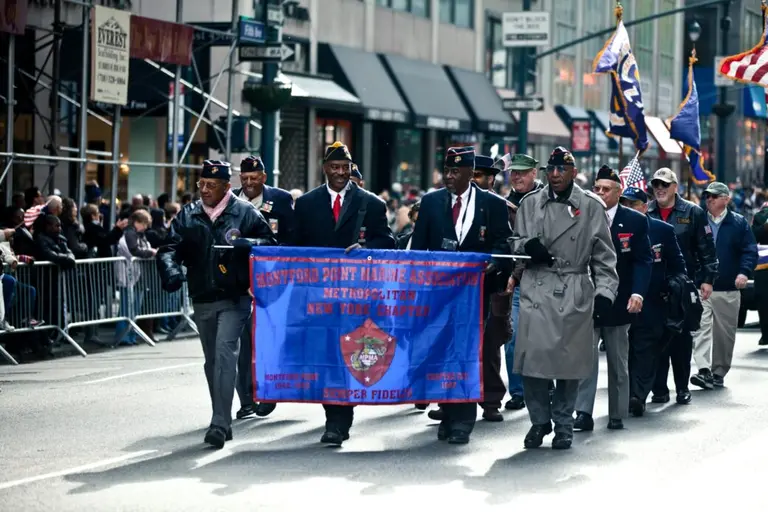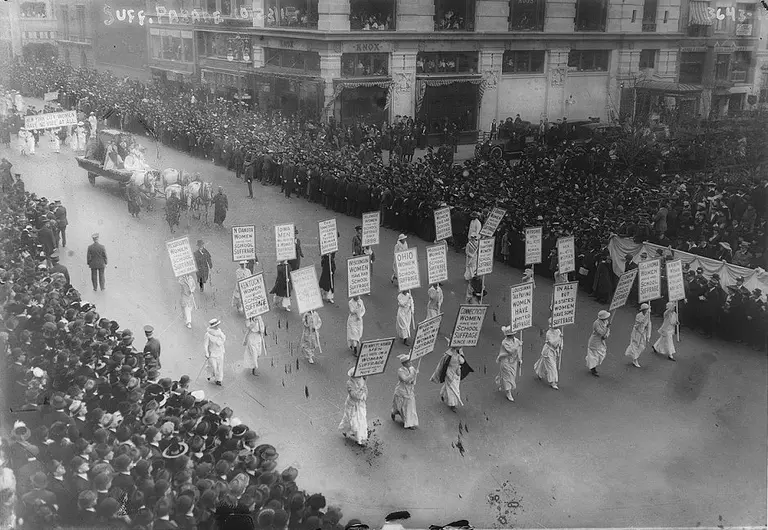The history of tattooing in NYC – and its 36-year ban
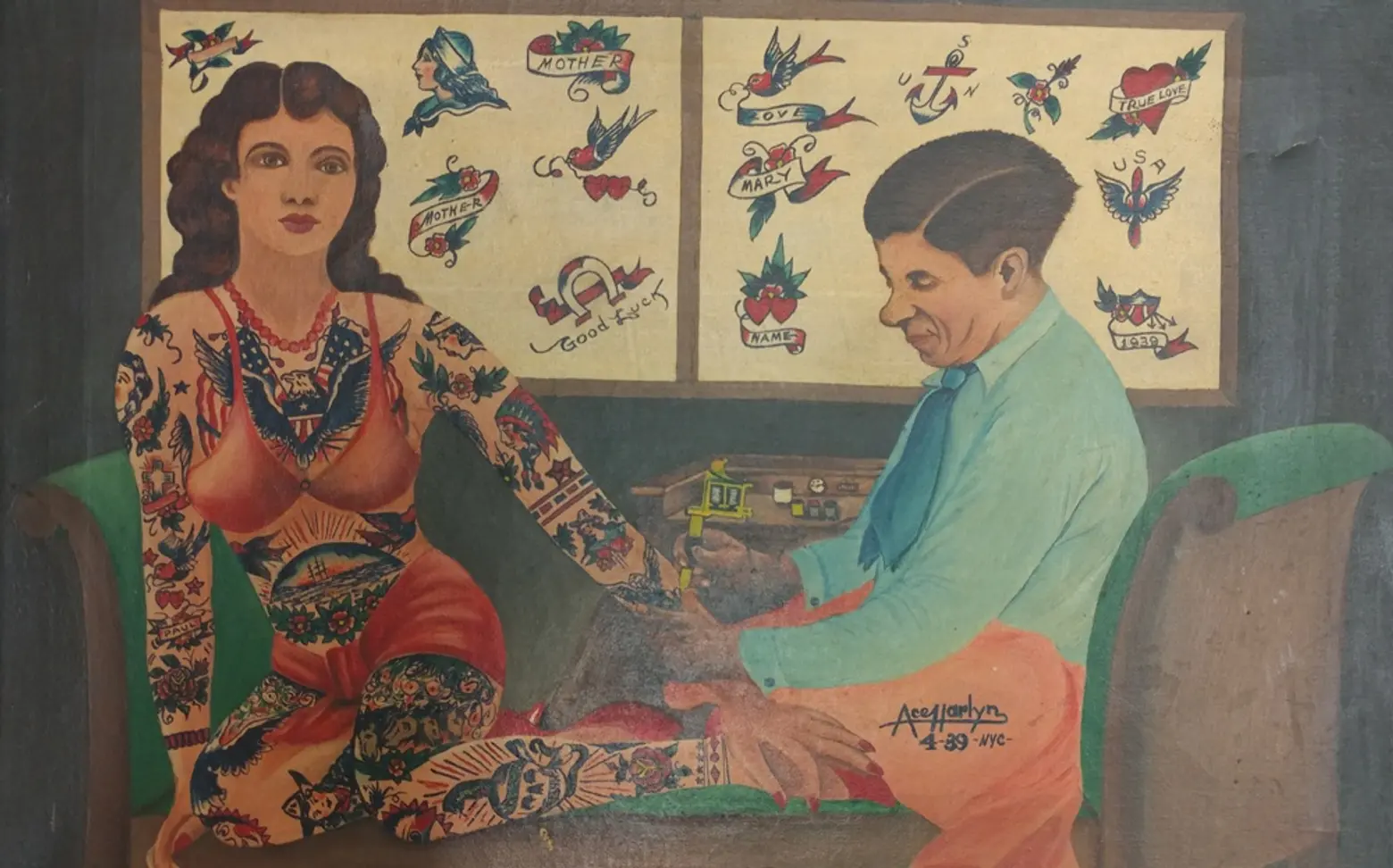
Charlie Wagner tattooing Millie Hull, 1939; Image courtesy of the New-York Historical Society.
We think of 1960s, ’70s and ’80s New York City as a freewheeling island of individuality and an alternative lifestyle haven, but the practice of body tattooing–more popular throughout history than many realize–was banned from 1961 until 1997. The ban was blamed on a Hepatitis B outbreak but could have had its origins in a number of things from a pre-World’s Fair crackdown to a health inspector’s personal vendetta. “Tattooed New York,” a current exhibition at the New-York Historical Society traces the practice of tattooing from its use among Native American tribes through its history with sailors, trendy victorian ladies and more recent ink aficionados. One of the more fascinating detours of that history tells of how the scene changed with the ban, when NYC’s tattoo artists set up private shops in their apartments.
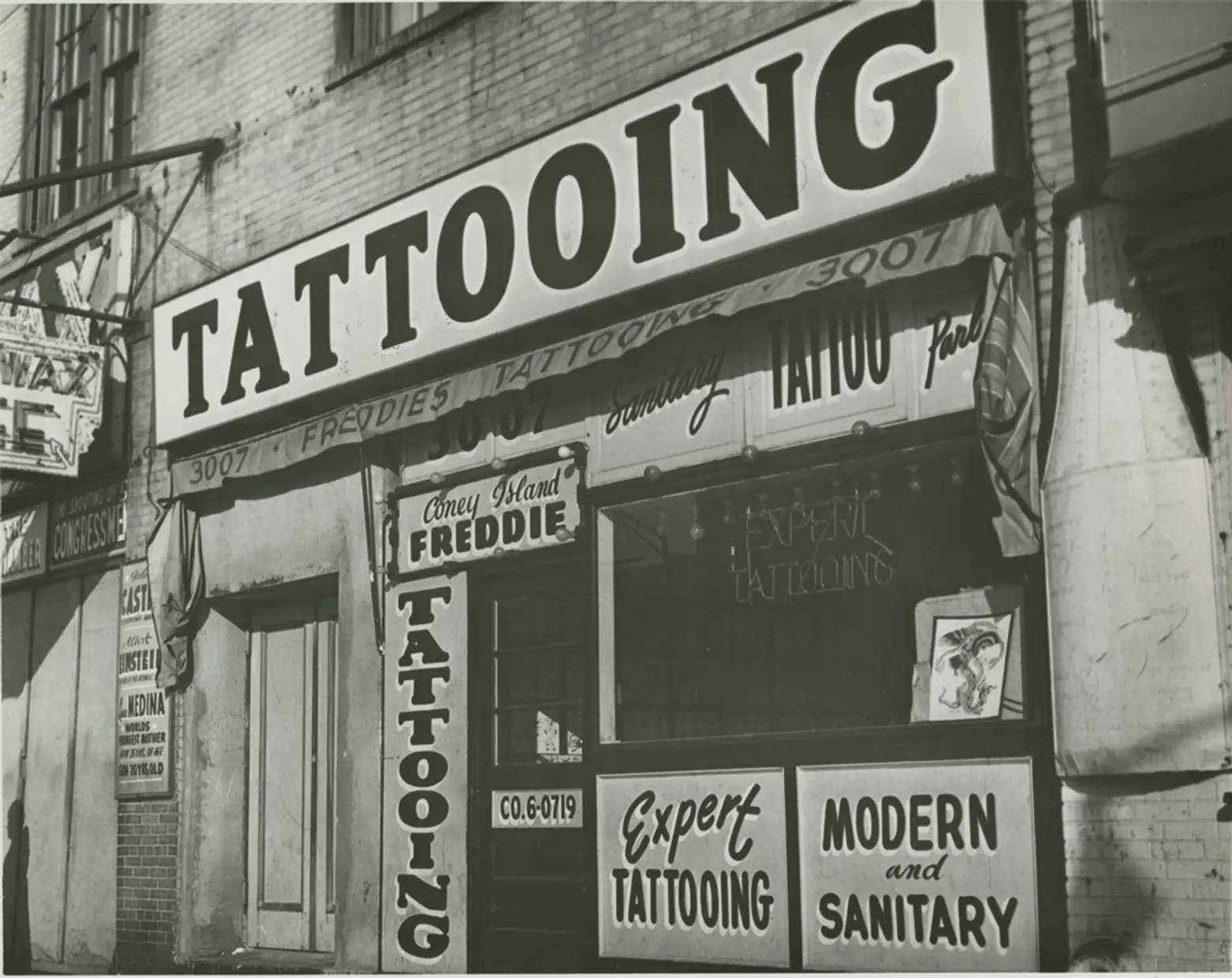
Coney Island tattoo shop prior to the 1961 ban; Image courtesy of the New-York Historical Society.
Skin tattooing has been traced back 300 years to the Native American practice of inking up to ward off evil; Iroquois tribe members would apply tattoos by cutting skin and applying soot or crushed minerals to the wound, according to Smithsonian.
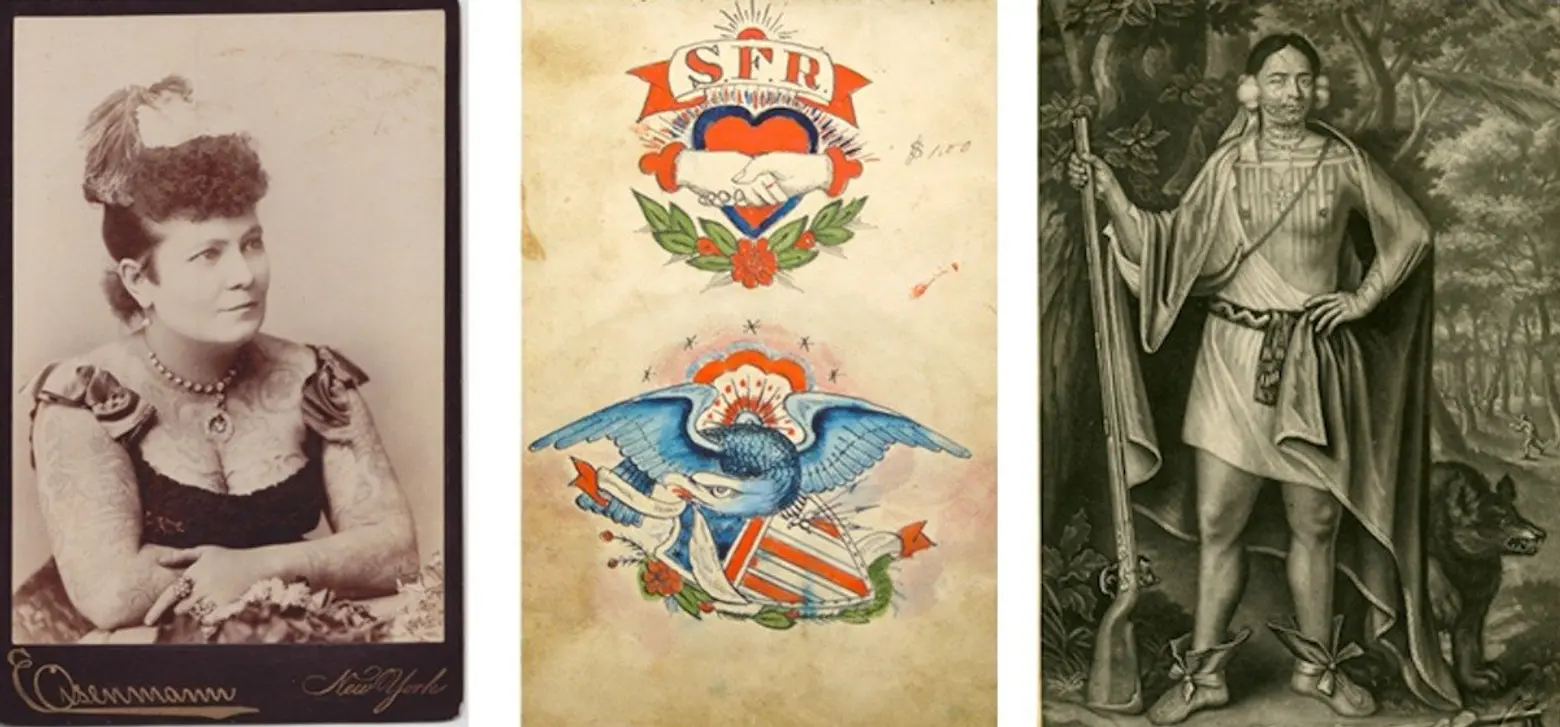
Images courtesy of the New-York Historical Society.
Sailors, a more recognizable tattoo-loving subculture, got their initials inked on their skin starting in the 1700s; their ink was used as identification and to protect them from impressment. When the U.S. government rolled out Social Security numbers in 1936, citizens were told to keep the information in a safe place; some figured skin was a smart solution.
Tattooing was more popular than many realize in all walks of life in the early 20th century, especially among women. The Victorian era saw fashionable women having their favorite tattoo artists come to their homes for discreet ink in places that could be easily concealed, a practice that continued to grow throughout the century. New York writer Dorothy Parker had a small blue star tattooed on the inside of her upper arm. On the more extreme end of the spectrum, visibly–and proudly–tattooed women worked the sideshow stages at Coney Island and dime museums on the Bowery.
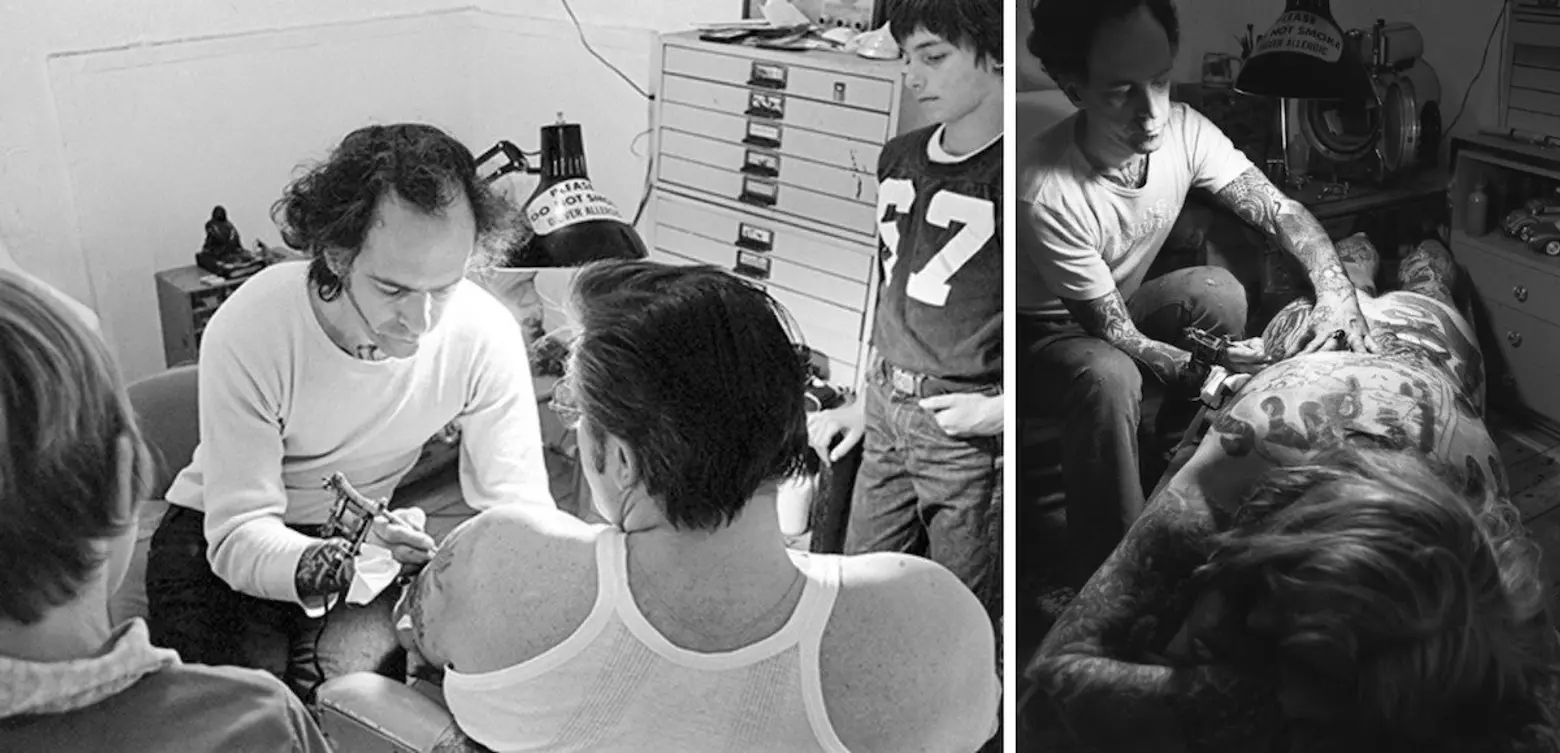
Tattoo artist Thom de Vita and clients in his studio at 326 East 4th Street, 1976; Images courtesy of the New-York Historical Society.
After the ban was put in place, the city’s tattoo artists closed up shop in the public eye, ushering in a new underground ink scene as they relaunched their craft by appointment only from their private apartments, taking on fewer clients. Some say this can be seen in a shift in the style of body art in the city. Exhibition curator Cristian Petru Panaite tells Gothamist, “By the 1970s there was definitely a clear break between the traditional style of New York tattoos and the ‘new visions,'” which were more tribal in nature. Around the same time, visual artists began to explore tattooing as a form of artistic expression, and brought more international traditions–such as those from Japan–into circulation.
The ban was lifted in 1997 when the city passed a bill legalizing tattooing, which by then had begun making its way into the mainstream as a self-expression choice by everyone from teachers and lawyers to celebrities.
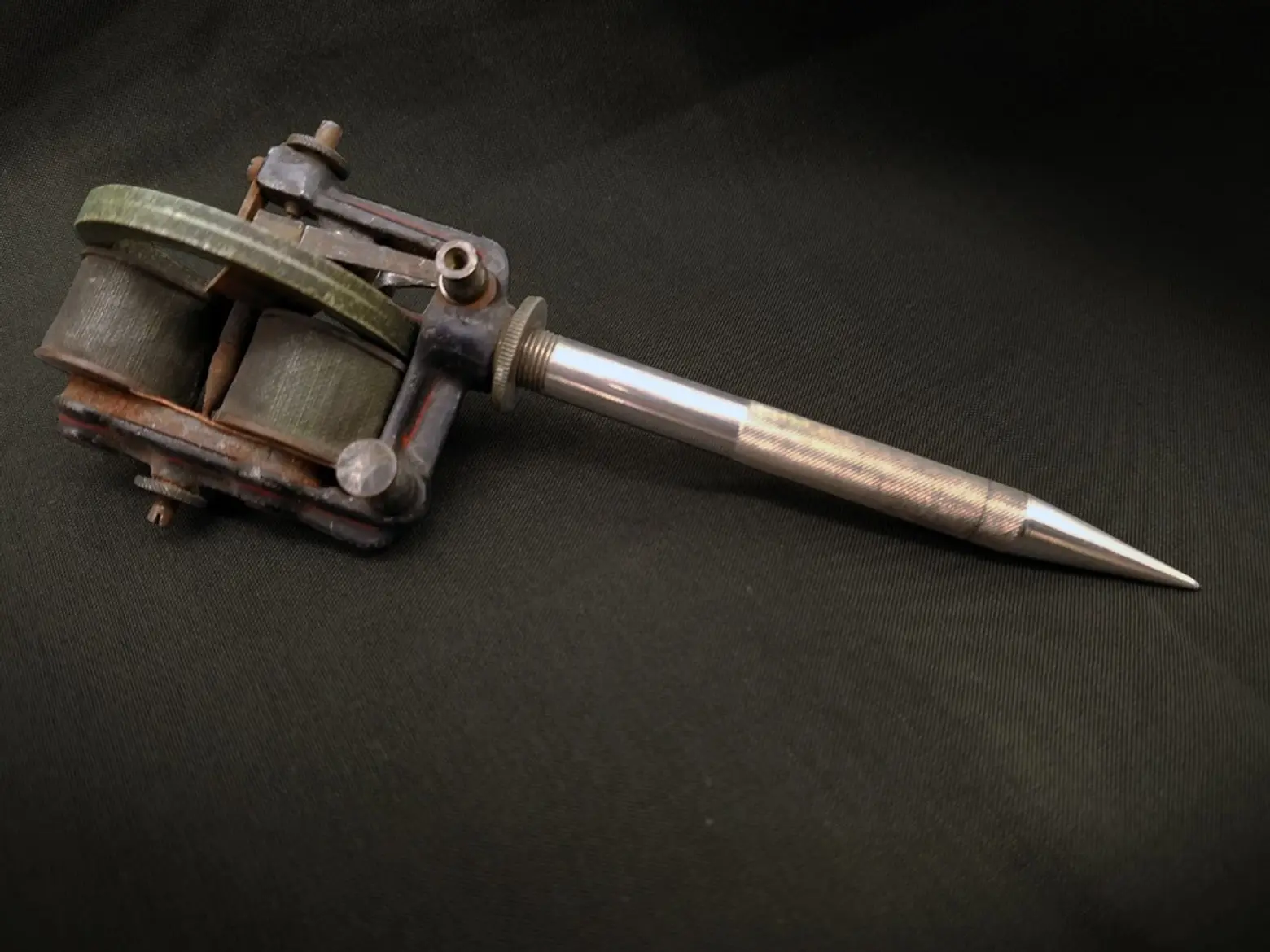
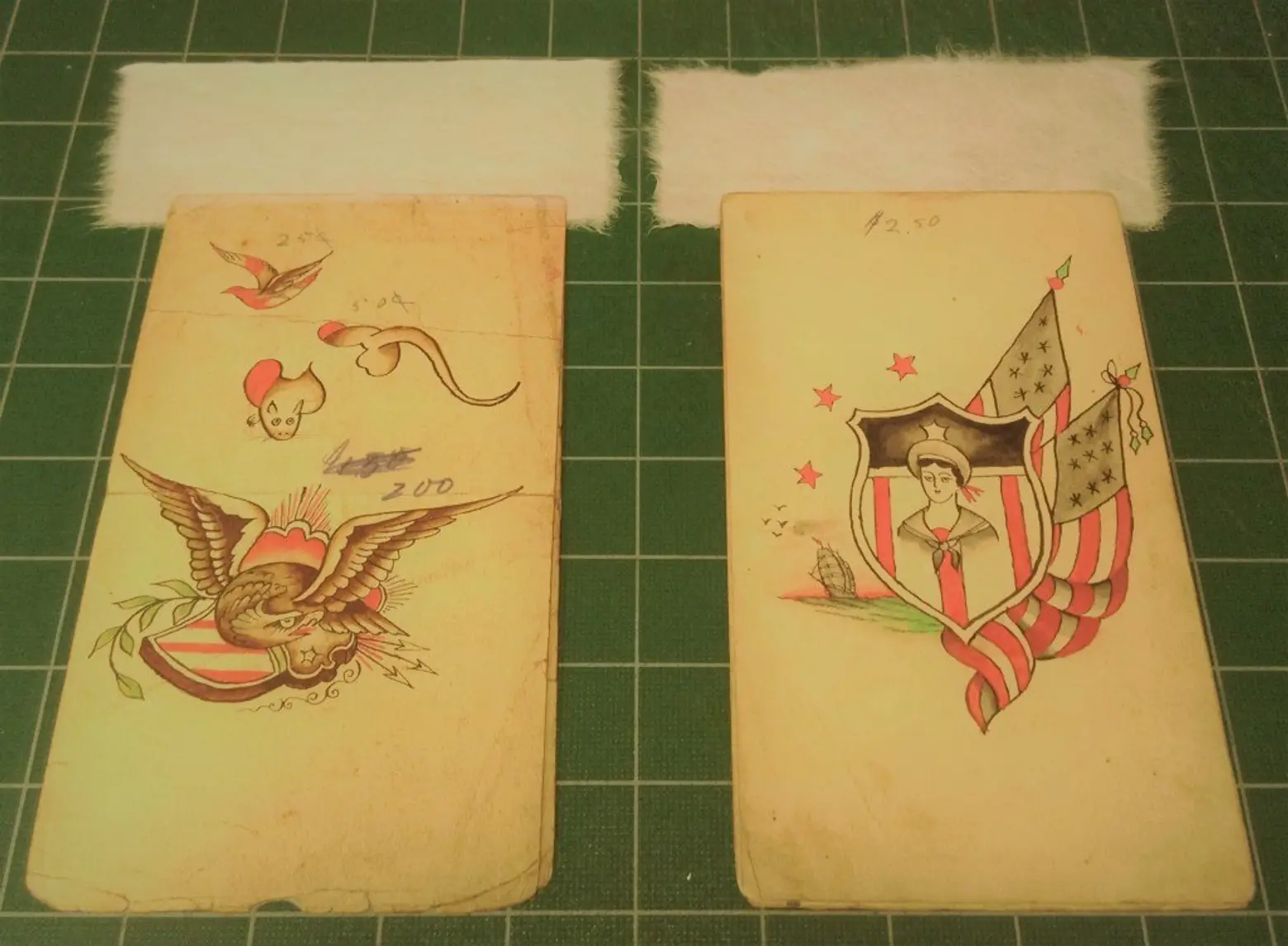
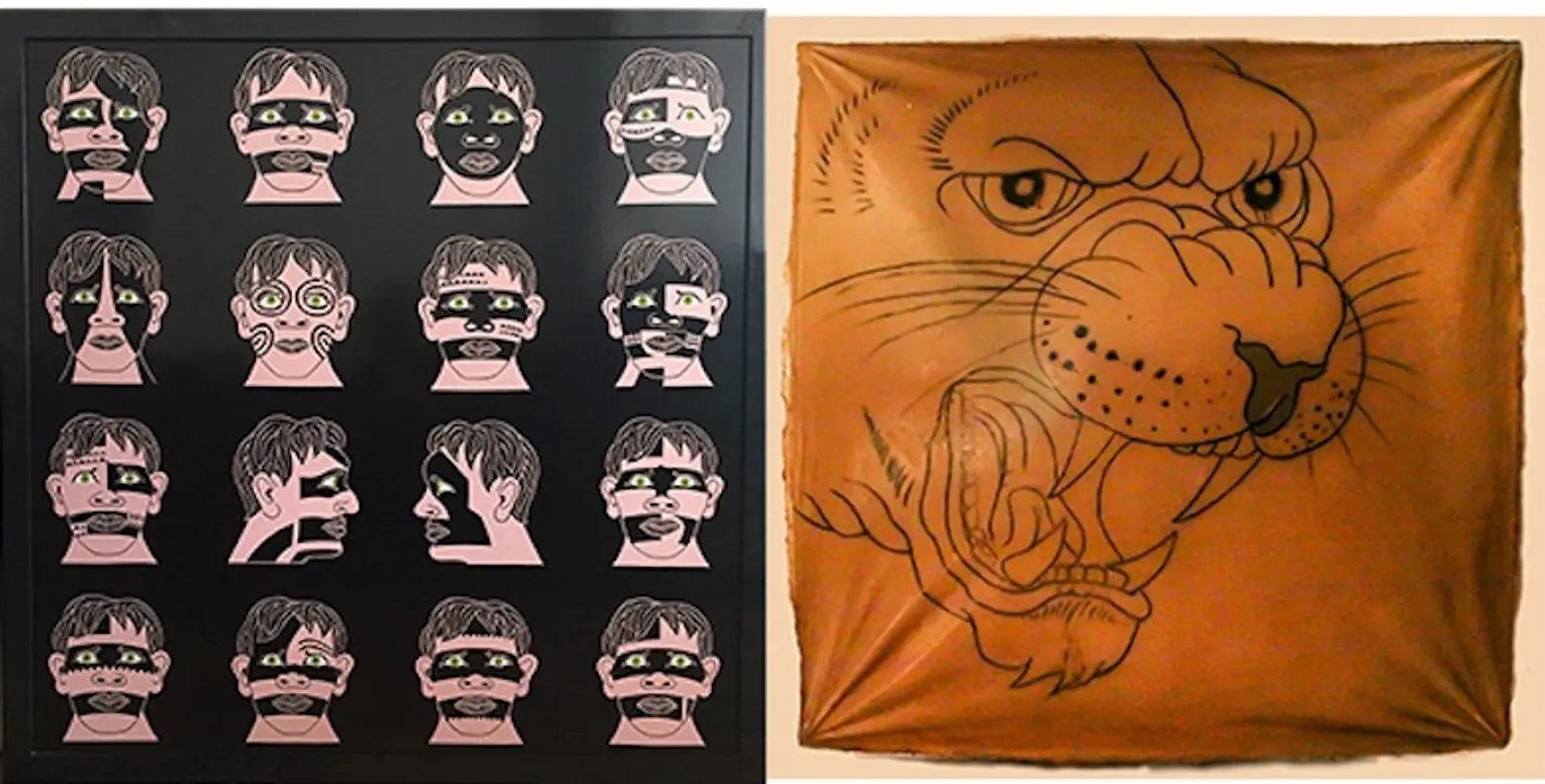
Thomas Edison’s electric pen (top), tattoo sketchbook (center), Ruth Marten (b.1949), Marquesan Heads, 1977., Courtesy of the Artist; Mike Bakaty (1936–2014), Big Panther, 1983; Collection of Yvonne Thomas. Photograph courtesy of Maury Englander (bottom); Images courtesy of the New-York Historical Society.
The exhibition, on view until April 30, goes beneath the surface of tattooing, with fascinating elements like Thomas Edison’s electric pen–it foreshadowed the early tattoo gun–and early tattoo machinery, the earliest (1706) Western images of a Seneca warrior showing his tattoos, colorful sideshow banners, a large collection of designs by well-known pioneers of modern tattooing who had shops on the Bowery, rare photographs taken in private “salon” settings during the ban years and works by some today’s best New York tattoo artists.
In addition, several tattoo artists will be doing live demos as part of the show, and the public is invited to get involved by posting images of their ink on the museum’s Instagram at #TattooedNY, which is displayed in a gallery on the museum’s website. “Tattooed New York” runs through April 30 at the New-York Historical Society.
[Via Smithsonian; Via Gothamist]
